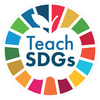|
By Tammy Dunbar, #TeachSDGs Ambassador Carlos was a puzzle. He usually had a bright, engaging smile, loved to read, and was very well spoken. However, when it came to writing assignments, he froze. Two years before he came to me in fifth grade, he had qualified for resource help with writing skills. Goals were set, but it was painfully obvious that Carlos just could not get words down on paper. Halfway through the year, we were reading Dear Mr. Henshaw by Beverly Cleary, which Carlos very much enjoyed. But when I asked the class to write about their favorite part of the book, Carlos could not, or would not, do the assignment. I made him stay in at recess to work on it with me. As Carlos sullenly settled in, I reached for my laptop, without Carlos seeing me, and asked him just to talk about his favorite part of the book. Relaxing a little, he began to discuss what he most enjoyed about the book. When he was done talking, I tapped my screen a couple of times, and then asked him to read what was on it. He started reading aloud, then said, “That’s what I just said!” I urged him to finish reading it out loud. When he was done, I told him that’s all I wanted him to do: write like he talks. That’s when I saw the look of understanding on his face along with a growing smile; he was making the connection between what he had said and what was showing on the screen. My “aha moment” was that there must be even more ways that technology could help students overcome obstacles and find success. Having co-authored the successful Human Differences project, I knew the power of collaborating on global projects. This Skype project paved the pathway for students from 50 schools, in 37 countries on six continents, to use the Sustainable Development Goals to talk about invisible and tactile walls between people and the need to build bridges of understanding in their place. I was really energized by the incredibly positive teacher and student responses from these global and life-changing, collaborative connections. Then I ran into my dear friend and super librarian Julie Hembree at a Microsoft Hack the Classroom event. For six years, Julie and the students at the school where she taught as a teacher-librarian had raised funds and sent more than 7,000 books to teachers in the Microsoft Educator network in Lesotho, Nigeria, South Africa, and Zambia. Julie knew that the 126 million illiterate youth in the world today are looking at an almost certain life of poverty. Teaching in a school with a high percentage of low-income families, I also understood the challenges of cultivating literacy in our classroom. As we spoke, we knew our efforts needed to be bigger, bolder and powered by empowered students and teachers. Using the fourth Sustainable Development Goal (Quality Education) as our guide, we developed the Cultivate World Literacy global Literacy project. Using the tools students have freely at their disposal, like Learning Tools, OneDrive, OneNote, Skype, and Sway, students of all ages and abilities would both celebrate literacy and research the issues of illiteracy. Using Skype in the Classroom, they would connect with others around the globe to share their knowledge. One hundred thirty classrooms across 34 countries and six continents joined in our initial project. We were honored to have Dr. Ada Okika, Executive Director of UNESCO Center for Global Education, as one of our many celebrity supporters (authors, journalists & dignitaries). Cultivate World Literacy takes students and teachers through a journey, of focusing first on themselves and the issues of literacy at their local level, then moving beyond themselves in order to gain a perspective on the importance of literacy worldwide. Finally, they arrive at the ultimate challenge of becoming agents of change. We hope Cultivate World Literacy project will be a catalyst for change. We have already seen hundreds of students share favorite authors never heard of before in other countries, read books out loud to each other via Skype, raise money to fund Read-a-Thons and Books to Africa, write DonorsChoose projects to purchase emergent readers for Kindergarteners and truly cultivate a love of reading with each other and the world. We are honored and humbled that Cultivate World Literacy has won the 2018 ISTE Literacy PLN Award. We dream of this grassroots movement continue to empower students who don’t want to see another generation of children living in poverty, and emboldening students and teachers to step up and make a difference. They will rally for children, regardless of their circumstances, to have the opportunity to read, write, and have a quality education. The memory of the smile on Carlos’ face inspires me to believe that by cultivating world literacy, and empowering students in the process, we can help our students rewrite their future. Resources for Cultivate World Literacy Website for Cultivate World Literacy Microsoft in Education Collaborative Skype Lesson Plan  Tammy Brecht Dunbar, M.Ed., S.T.E.M. Microsoft Innovative Educator Expert Fellow, Certified Educator & Master Trainer; 2016 California Woman of the Year, Assembly District 12; #TeachSDGs Ambassador; CV: bit.ly/TammyBrechtDunbar |
AuthorSTeachSDGs Team & Contributors Archives
November 2019
Categories |


 RSS Feed
RSS Feed